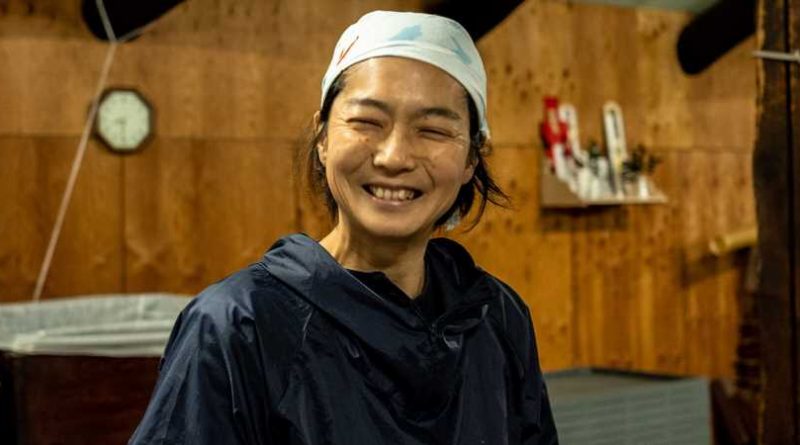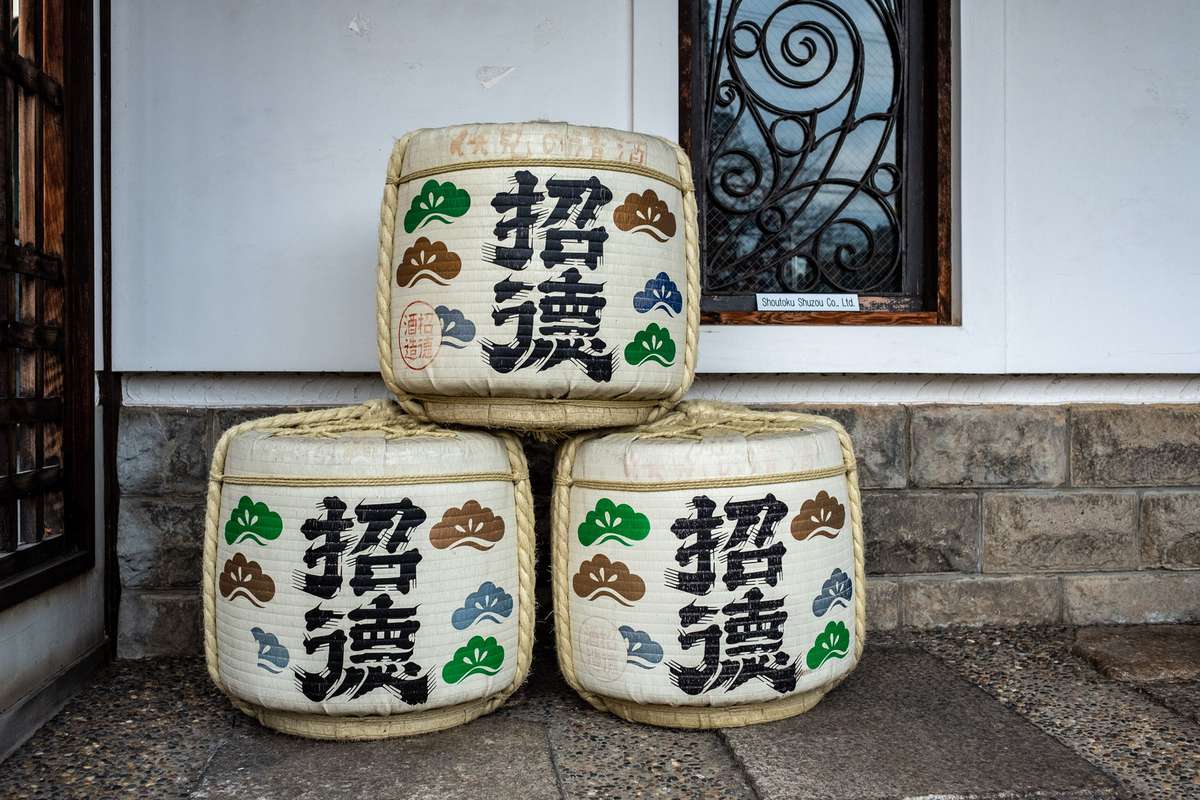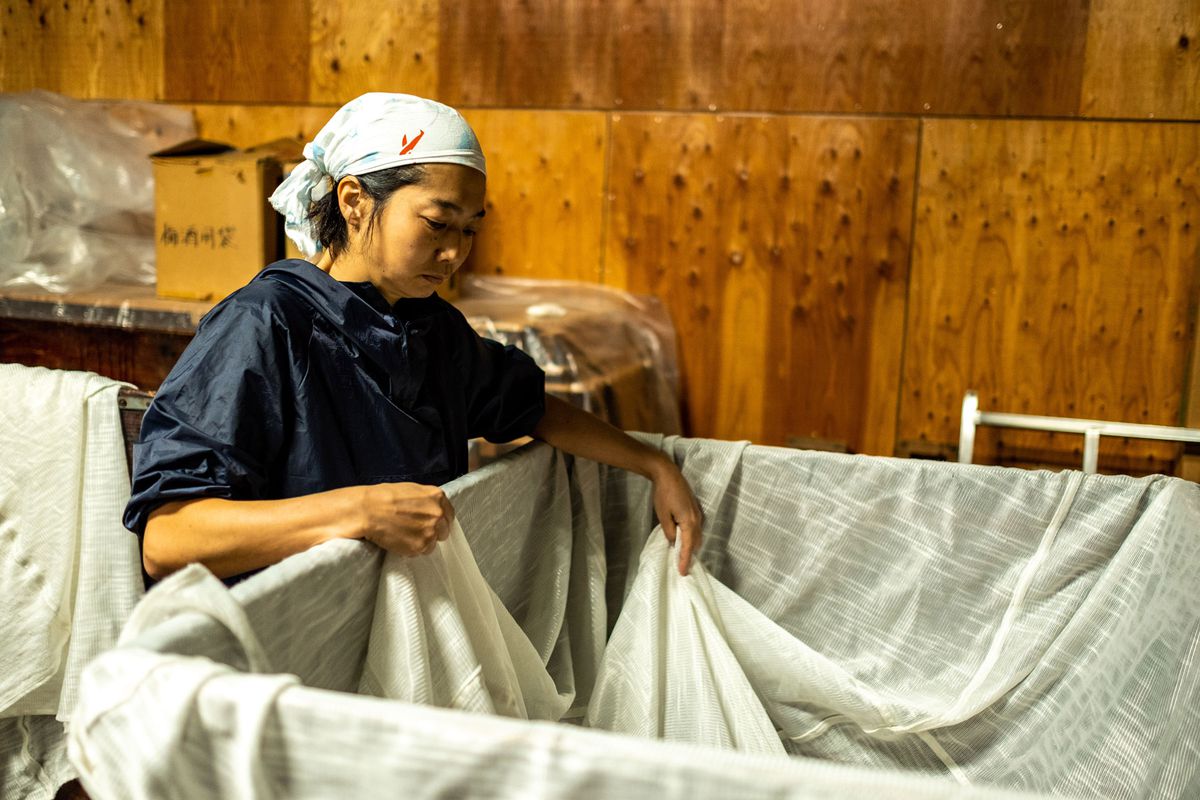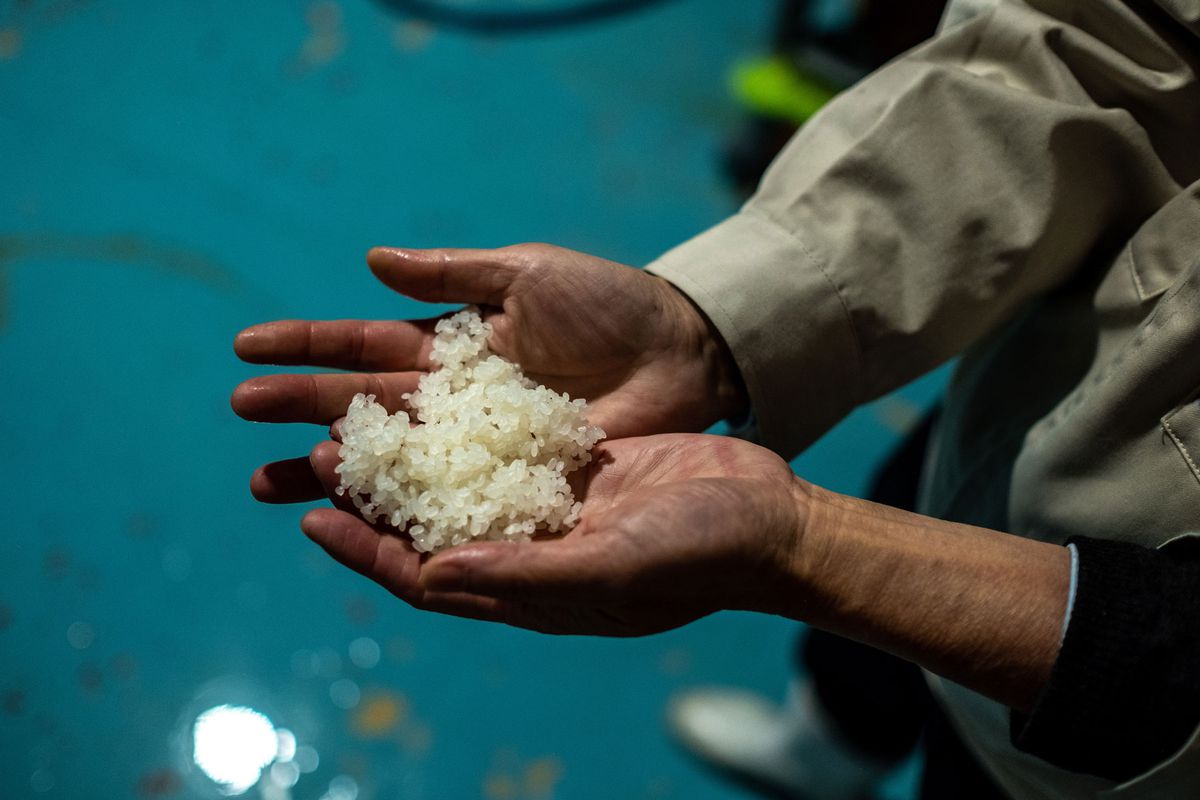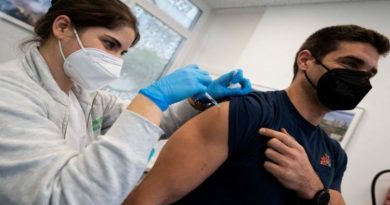Meet the Female Brewmaster Breaking Barriers in Japan's Sake Industry
As the toji, or master brewer, at Shoutoku Shuzo, a sake brewery in the Fushimi district of Kyoto, Maho Otsuka carefully keeps track of the time the rice is steamed, how long it sits with water, koji, and yeast to ferment, and just how long it takes to press and bottle for sale. Some of this process takes hours, some of it takes days, and some takes weeks. But for Otsuka, that's okay, because sake making is a 2,500-year-old process that she's spent 20 years mastering, and a job she plans to spend the rest of her life perfecting. It's also a professional field she could have never entered had she been born just a few years earlier, making her not only a master at brewing but a master of timing as well.
On a chilly fall afternoon in 2018, we met Otsuka outside the brewery as she prepared for a day laboring with her staff. At 45 years old, Otsuka has the wrinkleless face of a woman less than half her age, likely due to the time spent amongst the sake enzymes that are well-known and well-loved in beauty circles. It is only the small wisps of gray that poke out under her hair wrap that give away her wisdom.
She is quiet and diligent in her work, almost conducting rather than instructing staffers on what to do next. It is not out of any meekness, but rather a true command of the room with a silent strength only women can possess. It's a rare quality in a sake brewery considering out of more than 1,000 active breweries in Japan only an estimated 45 are owned by women or have a female brewmaster.
"I entered the business more than 20 years ago after graduating college," Otsuka says. "At the time, women were a rarity in the business."
Shoutoku Shuzo happily took her on, first to work under the tutelage of her predecessor, a 70-year-old man who spent decades in the brewery. Though in the beginning, Otsuka had to split her time between the brewery and the office, working on clerical duties often relegated to women. Soon, however, everyone saw her true worth. But, in becoming the brewery's toji, Otsuka was merely helping the industry connect with its feminine roots.
As PRI reported, thousands of years ago, sake was a distinctly female craft. Even the word toji can mean "lady" when written in old characters, the website explained.
Even the origins of sake literally came from the mouth of women. According to Vice, around the 8th century BC, sake was made by young maidens who chewed on the rice to introduce the right enzymes. They then spat it out before straining into the drink. The sake, Vice explained, was called bijinshu, or "beautiful woman sake."
However, somewhere in the 1600s, women began to be viewed as unclean and unfit for the brewery, so men began to take over. By the 1800s women were fully relegated to domestic duties and were out of the sake scene altogether. It was this way until the late 20th century when breweries, importers, and restaurateurs started to realize that women could make a beverage that was wholly unique.
"Not everyone can be put in the same bucket ever, but many women tend to be wired as natural givers and caretakers," Nancy Cushman, sake sommelier and co-owner of o ya in Boston, says. "I think that for anyone who cares deeply about their craft, their end goal is to delight the person who is consuming it. You can taste the care in well-made sake. Making sake is both a science and an art and the finer sakes require a lot of care and attention to detail throughout the entire process."
Even the water used for some sake can have a feminine touch. Feminine style sake, known as "onna-zake," is typically made with what the Society for Nada Sake Research calls "mineral-light soft water, giving a gentler, slower-fermenting moromi, resulting in sweeter ama-kuchi sake with lower acidity. Soft, smooth, and kirei when new, its fine lines make for easy drinking." It also happens to be the type of water running below Otsuka's brewery.
Of course, barriers do still exist for women in the sake industry, just as they do for any profession. "But thankfully, some of those walls are being broken down and new traditions are being created, which will open the door for more women in the industry moving forward," Cushman says, pointing to women like Miho Imada at Imada Sake Brewery in Hiroshima as a prime example of others like Otsuka who are leading the charge.
As for other women who want to get into the industry, Otsuka says, the time is now.
"I want more women to get involved," she says. "It's a very physical job, but women are excellent brewers because women are natural analysts. Women are sensitive, we use all our senses and we love eating. More women will bring more flavor, unique products, and unique thinking."
This story originally appeared on Departures.com.
Source: Read Full Article
